Temples of my city. Church of Michael and Theodore of Chernigov Wonderworkers. Church of Michael and Fedor of Chernigov Chernigov Church of Michael and Fedor
Church of Saints Prince Michael and his faithful boyarin Theodore of Chernigov Wonderworkers
Chernigovsky lane, 3
“Chernigov Lane was named in the 18th century after the Church of the Chernigov Wonderworkers that stood in it.”
"Originally built as a side church to the neighboring Church of John the Baptist in 1675; rebuilt by the merchant widow Milyutina."
“One should think that it was here on January 14, 1578 that the relics of St. Prince Michael were met, which is why the temple was listed in honor of his “presentation” back in 1677. It has been documented since 1625 as a wooden one. The stone one was laid on May 17, and consecrated on the 25th October 1695; the builder of the temple was the merchant Juliana Ivanovna Malyutina. In 1740, the chapel of St. Catherine was added to the refectory from the south, dismantled in 1830, when there was a significant renovation of the temple and consecration on September 19. The tented bell tower of the 17th century, which stood from the west , was no longer there by the middle of the 19th century. Inside, the main iconostasis and small separate ones were in the Empire style of 1830. On the outer wall there was an inscription about the construction of the church in 1675."
“On the contrary, there is another architectural monument - a church built in 1675 in memory of the Chernigov prince Mikhail and his close boyar Fyodor killed by the Mongol-Tatars at Batu’s headquarters. Both churches have recently been carefully restored and, together with the bell tower, now form an ensemble rare in its picturesqueness, which acquires even greater expressiveness when compared with a tall apartment building (No. 4, 1913, architect K. A. Dulin), in the background at the bend in the alley.”
The temple was assigned to the neighboring Church of John the Baptist near Bor.
“After the church was closed in 1924, it was given to the Baptists”; then it was used as a warehouse.
"Old Testament Trinity icon with Genesis, circa 1675, school of the Armory, from the Church of the Chernigov Wonderworkers, now located in the Tretyakov Gallery, where it was transferred in 1934." - this date can be taken as the approximate date for the closure of the temple.
In 1965, M. L. Bogoyavlensky wrote: “Currently, the temple is decapitated, the plaster has fallen off in many places, its appearance is sloppy, abandoned. The building is used as a warehouse.”
Since 1977, the church, together with the neighboring Ioanno-Predtechenskaya, began to slowly be restored. By 1982, the external renovation was completed: the chapters, the covering of which was made of emerald glazed tiles, were again restored. The completion with kokoshniks (already in the 19th century, which was a simple hipped roof) has been revealed. A fence with bars has been repaired to the east of the church along the lane. Crosses are placed on the heads. In 1990, its owner was the same as the Church of John the Baptist.
“The Church of Michael and Fyodor of Chernigov, 1675, with a 19th-century fence, is under state protection at No. 25.”
In 1991 it was returned to believers.
Photo: Church of Michael and Fyodor of Chernigov
Photo and description
According to legend, the temple of Michael and Fyodor of Chernigov was founded on the place where Muscovites met their relics. Prince Mikhail Vsevolodovich of Chernigov and his boyar Fedor were executed in 1246 in the Golden Horde by order of Batu Khan. The prince and his boyar accepted martyrdom for their refusal to bow to fire and pagan idols. Prince Mikhail was canonized in 1572, and in 1578 part of his relics was brought to Moscow from Chernigov. Later the relics were transferred to the Archangel Cathedral, located in the Moscow Kremlin.
In Moscow, the temple is located in Chernigovsky Lane, next to the Church of John the Baptist, to which for a long time it was treated as a chapel. By the way, the lane got its name thanks to this church. It is known that its first building was built on the lands of the former Ivanovo Monastery. This monastery was moved to its current location in the first half of the 16th century and is now located in Maly Ivanovsky Lane.
A stone church in honor of Mikhail and Fyodor, instead of a wooden one, was built in 1675, and twenty years later its first reconstruction was carried out. With money donated by merchant Juliana Malyutina, the temple was rebuilt and acquired the features of the Moscow Baroque and Russian patterned style - very decorative, with many details of bizarre shapes and outlines. Due to its unique appearance, the church was recognized as a federal architectural monument; together with the Church of St. John the Baptist they form a historical and architectural complex. One of the icons of the church - “The Old Testament Trinity” (second half of the 17th century), confiscated after the revolution - is now kept in the Tretyakov Gallery.
In the mid-30s, the Church of Michael and Fyodor was closed, the building was stripped of its domes and converted into a warehouse. In the 80s, the building was restored, and in the early 90s the building was returned to the Russian Orthodox Church.
IOLChurch of Michael and Feodor of Chernigov (Temple of Chernigov Wonderworkers) - a Moscow church, known since 1625 and consecrated in honor of the martyrs Prince Mikhail Vsevolodovich and his boyar Fedor. After the October Revolution, the temple was closed, and the building was used for storage and living quarters. In 1977, the building was reconstructed and by 1991 it was transferred to the jurisdiction of the Russian Orthodox Church. Since 2010, the church has been occupied by the Church Graduate School named after Saints Cyril and Methodius.
Construction and use[ | ]
Architectural decor of the temple, 2008
In the second half of the 16th century, by order of Ivan IV, the relics of Saints Michael and Fyodor of Chernigov were brought to Moscow. The procession was solemnly greeted near the Church of John the Baptist near Bor. Presumably, later a wooden church was erected on this very spot; the first mention of it dates back to 1625. In 1675, it was rebuilt in stone with donations from merchant Juliana Ivanovna Malyutina. There is also evidence that she provided funds for the next reconstruction, which took place twenty years later. Until 1677, the church was called “The Meeting of the Relics of the Grand Duke of Chernigov Michael” and was considered a side chapel for the Church of John the Baptist.
The church had typical forms for the 17th century and consisted of a small quadrangle and a refectory, adjoined to the west by a hipped bell tower. The temple was made in the Russian pattern style. The main structure has closed vaults, it is crowned by two tiers of enlarged pointed kokoshniks and elongated domes. The entrance is framed by a ceremonial portal. Visually, the church premises appear smaller due to the small number of windows and poor natural light. The first tier of the bell tower was decorated with corner paired pilasters; later this volume was converted into the vestibule of the church.
In 1740, the temple and the nearby Church of the Beheading of John the Baptist were reconstructed. Their facades were supplemented with Baroque elements. On the southern side, a chapel of the Holy Great Martyr Catherine was added to the Church of the Chernigov Wonderworkers. The church was covered with a hipped roof. In the 18th century, Chernigovsky Lane began to be named in honor of the temple of the martyrs Michael and Fyodor.
The structure was badly damaged during the Moscow fire of 1812, and eight years later the church was abolished, being added to the Church of the Beheading of John the Baptist near Bor. In 1830, the Church of the Chernigov Wonderworkers was renovated with new iconostases in the Empire style. During the work, Catherine's chapel and the top of the bell tower were dismantled, which was finally eliminated by the middle of the 19th century. On September 19, 1830, the reconstructed temple was consecrated.
By the beginning of the 20th century, the church began to be used only in the summer months; soon after the 1917 revolution, all churches on Chernigovsky Lane were closed. Since 1924, the Church of Saints Michael and Theodore was occupied by a Baptist prayer house, but it was soon also liquidated. Presumably, the organization was abolished in 1934, when one of the temple’s shrines, the icon of the “Old Testament Trinity with Being,” was transferred to the funds of the Tretyakov Gallery. It was created by the masters of the Armory for the opening of the stone temple. Later, the heads of the church were dismantled, and the structure was used as a warehouse and living quarters, so by 1969 it was very dilapidated.
In 1977, under the leadership of architects A.V. Okhom and S.S. Kravchenko, a five-year restoration of the temple began. During the work, the domes and fence along the alley were restored, the walls were whitewashed, and the finishing with kokoshniks with green glazed tiles was recreated. In 1991, the building came under the jurisdiction of the Russian Orthodox Church and received the status of the Patriarchal Chernigov Metochion. Archpriest Sergei Toportsev was appointed rector of the temple, who supervised the preparation of the premises for worship. After petitions from the rector, the church house, the almshouse building and the bell tower were also returned to the organization’s jurisdiction. On October 3, 1993, the rededication took place.
In 1997, the restored Church of the Beheading of John the Baptist near Bor was also transferred to the jurisdiction of the Chernigov metochion. By 2010, a church-wide graduate school named after Saints Cyril and Methodius began operating on the basis of the metochion. After this, a comprehensive reconstruction of the territory began. During the restoration of the foundation of the Church of the Chernigov Wonderworkers, a burial with a preserved tombstone from the 17th century was discovered. Archaeologists have established that it belongs to the cloth merchant Andrei Filimonov (Malyuta Filimonovich). The burial of a representative of the merchant class on the territory of the temple is unusual for that period. Presumably, it was he who bequeathed to his widow Juliana Malyutina to rebuild the temple in stone. In the premises of the church, paintings from the 17th and 19th centuries were also discovered, which were preserved. The entire painting of the halls was recreated based on the samples found. In addition, workers strengthened the rafter system and foundation, installed crosses, and restored facades and domes. The work was carried out by the restoration workshop “Vozrozhdenie” as part of the “Moscow Culture 2012-2016” program. The renovation and painting of the premises was completed by October 2017. On March 11, 2018, the restored temple of the martyrs Michael and Fyodor of Chernigov was consecrated by Patriarch Kirill of Moscow and All Rus'. He donated the icon of the Mother of God “The Burning Bush” to the church.
Notes [ | ]
- Church of Saints Michael and Feodor of Chernigov Wonderworkers (undefined) . Get to know Moscow (2018). Retrieved November 6, 2018.
(Chernigovsky Lane, No. 3)
Prince Mikhail Chernigovsky - the son of Vsevolod Olgovich Chermny - was pious and humble from his youth. He suffered from a serious illness ( It happened to him, by God's permission, that he was overcome by a serious illness, as all the components of his body were weakened). Having heard about miraculous healings with the help of the prayers of the Pereyaslav stylite Nikita, the young prince, together with his faithful bolyarin Theodore went to Pereyaslavl. Having received a wooden staff from the holy ascetic, the prince was immediately healed. In 1225 he was invited to reign by the Novgorodians, but soon returned to his native Chernigov. In 1235, after Yaroslav Vsevolodovich left for Vladimir, Mikhail took the Kiev throne.
During the Mongol-Tatar invasion of Rus', the prince went to Hungary to seek help from Poland and Germany, but was unable to secure support. Rus' was burned and destroyed. Mikhail returned to the destroyed Kyiv, and then moved to Chernigov and ruled there until, together with other princes, he was summoned to the Horde. According to the “Tale of the murder in the Horde of Prince Mikhail of Chernigov and his boyar Theodore”, written at the end of the 13th century: “When they began to be called by the Tatars, it was necessary, saying: “It is not proper for the Kans and Batyevs to live on the land without bowing to them.” Mnozi bo ehasha and bowed to Kanova and Batyevi. The custom is the name of Kan and Batu: if someone comes to bow to him, he did not order the first to be brought before him, but he was ordered by the sorcerer to lead through the fire and bow to the bush and the idol. And those who bring gifts to the Tsar with him, take the wills from all of them, sweep the first into the fire, and also throw the samekh and gifts before the Tsar. Many princes and their boyars walked through the fire and worshiped the sun and the bush and the idol of glory for the sake of this light and the glory of each of their power. Without rebuke, they let them blaspheme whoever wants power, so that they may be deceived by the glory of this light.”
Church of the Saints of the Blessed Prince Michael and his boyar Theodore, Chernigov Wonderworkers
It was Mikhail’s turn to go to the Horde to see Batu. The prince asked for blessings from his spiritual father, who ordered him to stand firmly for the Orthodox faith. When Mikhail and the boyar Theodore arrived at Batu in 1246, the wise men led them to a place where burning fires were built on both sides of the path and where all the pagans passed through the fire and bowed to the sun and idols. The Magi wanted to guide Michael and Theodore through the fire. The Ipatiev Chronicle tells us the brave and courageous answer of the prince: “Mikhail answered: “If God has betrayed us and our power, sin for our sake, is in your hands, we bow to you and bring honor to you. But we do not bow to your father’s law and your godless commandment.”
The boyars who were with the prince began to ask Mikhail to bow to the fire, but he answered them: “I don’t want to just be called a Christian by name, but act like a filthy person”. Then Mikhail’s grandson, Prince Boris of Rostov, began to beg him to go through the fire. Boyar Theodore saw that Mikhail could succumb to his pleas. And then, in order to strengthen the spirit of the prince, Theodore began to speak to him in the words of Christ from the Gospel: “Whoever wants to save his soul will lose it, and whoever loses his soul for the sake of Me and the Gospel will save it. For what does it profit a man if he gains the whole world and loses his own soul? Or what ransom will a man give for his soul? For whoever is ashamed of Me and My words in this adulterous and sinful generation, the Son of Man will also be ashamed of him when He comes in the glory of His Father with the holy Angels.”
Batu became furious because Mikhail and Theodore refused to bow to his gods - like a ferocious beast has become furious! He ordered to seize Mikhail. First they beat him on the heart with their fists, and until he lost consciousness, the prince sang the psalm “Your martyrs, O Lord, have not renounced you, and for your sake, Christ, they suffer.” Then they threw Michael to the ground and kicked him until the ground was stained with blood, and after that the traitor to the Christian faith, Domian, cut off the prince’s head and threw him away. It was even more difficult for the boyar Theodore, because Mikhail was killed before his eyes, and then he was offered the principality in exchange for the worship of pagan gods. But Theodore chose to suffer for Christ, like his prince. The murderers tortured Theodore like Michael and cut off his head.
The bodies of the passion-bearers were thrown to be devoured by hungry dogs, but the animals miraculously did not touch them. After the feat of Michael and Theodore, the Tatar khans extremely rarely decided to test the steadfastness of the faith of the Russian people and their willingness to die for the Orthodox faith and did not demand that the Russians in the Horde perform the rituals of passing through fire. The relics of the holy martyrs were transferred to Chernigov. Many miracles happened near the relics, and Ivan the Terrible wanted to bring them to Moscow. In 1578, the Tsar and Metropolitan Anthony created a prayer “message” to the Chernigov miracle workers asking them to agree to the transfer of their holy relics to Moscow. In memory of this event, a holiday was established on February 14 and the Church of Michael of Chernigov, adjacent to the Church of the Beheading of John the Baptist near Bor, was built.
Until 1677, the church was called the Meeting of the Relics of Grand Duke Mikhail of Chernigov. The first stone church was erected in 1695 with donations from the merchant widow Juliania Ivanovna Malyutina. This characteristic Posad church from the late 17th century has survived to this day. It consisted of a refectory and a small quadrangle with kokoshniks, completed with a five-domed structure. From the west, the axial composition was closed by a bell tower. In 1740, the chapel of the Holy Great Martyr Catherine was added to the temple on the south side. At the same time, new decor appeared on the facades of the vestibule and refectory, and the roof with kokoshniks became hipped. In the 1820s - 1830s, the church was abolished and was considered assigned to the Church of the Beheading of John the Baptist near Bor. The chapel of St. Catherine and the upper part of the bell tower were dismantled.
Since 1924, there has been a Baptist prayer house in the building of the Church of Michael and Theodore of Chernigov. In the 1930s, the temple was finally closed. The probable date for the closure of the church is 1934. This is evidenced by the entry in the catalog of ancient Russian art of the Tretyakov Gallery about the transfer from the Church of the Chernigov Wonderworkers of the icon “Old Testament Trinity with Genesis” of 1675, made by the masters of the Armory Chamber. In the 1940s, the heads of the quadrangle were dismantled. In the 1970s, architects A.V. Ohom and S.S. Kravchenko began the restoration of the church, as a result of which the five-domed structure covered with emerald glazed tiles was restored, the crown with kokoshniks was opened, and a fence with a lattice was repaired to the east of the church along the alley.
In 1991, the temple was returned to believers, and on October 3, 1993, on the day of memory of Mikhail and Theodore of Chernigov, it was re-consecrated. Archpriest Sergius Toroptsev played a huge role in the restoration of the parish. In 1991, in the Epiphany Cathedral, His Holiness Patriarch Alexy II ordained Protodeacon Sergius to the priesthood, and a few days later he was appointed rector of the newly opened church in honor of Michael and Theodore of Chernigov miracle workers. Being an excellent electrician, carpenter and welder, Father Sergius did all the work to prepare the church for divine services with his own hands and with the help of a few parishioners. At the beginning of the twentieth century, when the churches of Chernigovsky Lane were already united into one parish, the Church of Michael and Theodore was used as a summer church. Since 1991, all services, even in winter, were held in an unheated church. Believers helped the church: they installed frames and doors, brought small heaters, and covered the stone floor with boards. Sometimes two people came to the service, and in winter Father Sergius led services without any parishioners at all.
For five years, the rector fought for the return to the parish of the neighboring Church of the Beheading of John the Baptist near Bor, which was occupied by a showroom of decorative glass. Between 1992 and 1994, through the efforts of Father Sergius, the buildings of the almshouse, bell tower and church house were returned to the parish. In the 1990s, the choir of the Church of Michael and Theodore of Chernigov was one of the best in Moscow thanks to its choir director I.D. Derkach, who had previously directed the choir of the Epiphany Cathedral in Yelokhov for many years. The choir was sung by professional singers who came along with the regent. And any parishioner of the temple could try himself as a singer. In 1994, the experienced and respected Archpriest Sergius Karamnov was appointed rector of the metochion of the Chernigov Martyrs, who restored the Church of the Beheading of John the Baptist.
The Church of Saints Prince Michael and Boyar Theodore of Chernigov would probably have been lost among the buildings of one of the central streets of Zamoskvorechye. But here, in the tiny and cozy Chernigovsky Lane, she is in her place. Made in the “Russian patterned” style, the church has several unique features. The first thing that catches your eye is the contrast of thin, elongated dome drums and specially enlarged kokoshniks and a developed entablature with a complex patterned design. Many elements of the temple have been preserved since the end of the 17th century: the lower row of plastic kokoshniks, paired columns at the corners of the quadrangle, the southern and northern portals, columnar window frames with keeled kokoshniks. Elements of painting from the first half of the 18th century have survived on the vaults and walls. Unusually low and wide, as if flattened to the ground, the refectory is equal in area to the main part of the temple. There are unusually few windows in the Church of Michael and Theodore of Chernigov: there are only two in the quadrangle, and four in the refectory. The lack of proper lighting further reduces the internal volume of the temple. The vestibule of the church was once the first tier of the bell tower. Now inside it you can see the vaults of the first half of the 18th century. The facades of the narthex are decorated with paired pilasters at the corners. In the fence along Chernigovsky Lane, a white stone plinth from the 18th century and brick tables with a lattice from the 19th century have been preserved.
S.K. Romanyuk in the book “From the History of Moscow Lanes” writes: “Both churches and the adjacent buildings were carefully restored in 1984 and form an ensemble rare in its picturesqueness, which acquires even greater expressiveness when compared with the high apartment building of I.F. Neustadt in the background at a bend in the alley.” Almost thirty years have passed since the last restoration. Now the churches of Chernigovsky Lane need at least cosmetic repairs. They have a kind of gray and cloudy appearance. Probably, churches that are not located on the busy Bolshaya Ordynka should not be ceremoniously beautiful, but still they are one of the oldest architectural monuments of Zamoskvorechye. I would like Chernigovsky Lane to become a kind of open-air museum, because there is not a single unremarkable building on it. On two hundred and eighteen meters there are as many as four monuments of cultural heritage from different eras, from the 17th century to the 20th century.
From the book Russia and Europe author Danilevsky Nikolai Yakovlevich From the book Church and People's Monthly Book in Rus' author Kalinsky Ivan Plakidych From the book National Unity Day: biography of the holiday author Eskin Yuri Moiseevich From the book Walks through the Silver Age. Saint Petersburg author Nedoshivin Vyacheslav MikhailovichPETERSBURG BY MIKHAIL KUZMIN The wine of spring needles I am ready to drink again with my soul, – After all, in every puddle there are fragments of glassy-scarlet clouds... We are travelers again! Do you agree? We have awakened from sleep! How beautiful are your miracles, Magician of love,
From the book In the Church author Zhalpanova Liniza Zhuvanovna5 Veneration of saints Saints in the Orthodox Church are treated as intercessors and mediators between God and man in the matter of spiritual growth. The Bible says: “There is one God, and one mediator between God and men, the man Christ Jesus, who gave Himself a ransom for all...” (1
From the book Life and Manners of Tsarist Russia author Anishkin V. G.Doubts of Michael and his mother Mikhail at that time lived with his mother, nun Martha, in the Ipatiev Monastery near the city of Kostroma. The Moscow embassy came to the monastery on March 13, 1613, but at Martha’s request they talked about business the next day. In the cathedral church it was announced that all
From the book New Russian Martyrs author Polish Protopresbyter MichaelThe wedding of Mikhail The Tsar was 29 years old when his mother chose a new bride for him. This was Princess Maria Vladimirovna Dolgorukova, daughter of Prince Vladimir Timofeevich. The chronicle says that the king entered into this marriage only at the will of his mother, but against his own wishes. In June
From the book The Most Famous Saints and Wonderworkers of Russia author Karpov Alexey Yurievich From the book Tablecloth by Lydia Libedinskaya author Gromova Natalia Alexandrovna From the book The most incredible in the world - sex, rituals, customs author Talalay StanislavSunset love of Mikhail Svetlov Svetlov stood up, extending his hand to me: - Wait. I'll tell you something. I may be a bad poet, but I have never denounced anyone, I have never written anything against anyone. I thought that for those years this was a considerable achievement - perhaps more difficult than writing
From the book Encyclopedia of Slavic culture, writing and mythology author Kononenko Alexey Anatolievich From the book Bolshaya Ordynka. Walk around Zamoskvorechye author Drozdov Denis Petrovich From the author's bookChurch of the Beheading of John the Baptist near Bor (Chernigovsky Lane, No. 2/4) Opposite the apartment building of I.F. In Neustadt there are two ancient churches at once - the Holy Great Martyrs Michael and Theodore of Chernigov and the Beheading of John the Baptist, which are connected
From the author's bookGymnasium V.D. Kositsyn, city estate of the 17th - 18th centuries (Chernigovsky Lane, No. 9/13) On the way back to Bolshaya Ordynka, we will turn into the courtyard of one remarkable building that cannot be missed while in Chernigovsky Lane. In the 1920s, local historians of the society
From the author's bookCHURCH OF THE HOLY MARTYR CLIMENT, POPE (Klimentovsky Lane, No. 7/26) The Dolgovs' estate was located on the corner of Bolshaya Ordynka and Klimentovsky Lane, into which the southern buildings faced. The lane got its name in honor of the Church of the Holy Martyr Clement.
From the author's bookChurch of St. Nicholas in Tolmachi (Maly Tolmachevsky Lane, No. 9) The wooden Church of St. Nicholas in Tolmatskaya Sloboda has been known since the beginning of the 17th century. In the Parish Book of the Patriarchal Order for 1625 it is called “the Church of the Great Wonderworker St. Nicholas, and in the chapel Ivan
A long time ago, in the 15th – early 16th centuries, the Ivanovsky Monastery stood on the site between today’s Ordynka and Pyatnitskaya streets. And on its territory there is a wooden church of the Holy Prince Michael and Boyar Theodore, Chernigov Wonderworkers, known since 1625. It was also called the Mikhailo-Feodorovskaya or Chernigov Church. And they placed it exactly at the meeting place of the relics of Mikhail and Theodore of Chernigov, who died a terrible death in the Horde in 1246, brought to Moscow.
In 1675, the dilapidated wooden temple was dismantled. And in its place, with the help of the Moscow merchant Juliana Ivanovna Malyutin, like a white swan, a snow-white stone beauty-church ascended.
Oh, it’s a pity that we don’t know the name of the architect and the craftsmen who built this snow-white miracle! By God, if I knew, I would list everyone by name, and I would bow at the feet of their memory for the amazing beauty that they left us!
Even before the revolution, academician, architectural historian, member of the commission for the preservation of ancient monuments Andrei Mikhailovich Pavlinov called the 17th century “the golden age of Russian architecture.”
And looking at the Chernigov church, you understand: the academician was right, oh, so right!
Rus' shook itself off from the Mongol yoke, breathed the air of freedom, blossomed...
And, of course, the dawn was expressed primarily in Orthodox architecture. It was then that, along with the canonical, traditional temples, many others appeared to the world, among which fire temples especially stood out. About 300 of them were built in Moscow and the Moscow region alone.
The Chernigov temple is one of the fiery ones. The tall quadrangle (tetrahedron) ends with two rows of pointed keel-shaped kokoshniks, similar to tongues of flame, and is crowned with five chapters - symbols of Christ and the four evangelists. A low refectory adjoins the temple, and the composition is completed by a tent-roofed bell tower.
It should be noted that after Moscow, fire temples began to be widely built throughout Rus'. And they are rightfully considered bright symbols of Russian civilization.
In Soviet times - in the 70-80s - the building of the Chernigov temple was carefully restored: the domes were restored and covered with emerald tiles, the top with kokoshniks was uncovered, and the walls were whitewashed. And in 1991 they returned it to the believers.
And you and I are again given the opportunity to admire the amazing beauty of the Chernigov church.
Her current address, by the way, is Chernigovsky Lane, building 3.

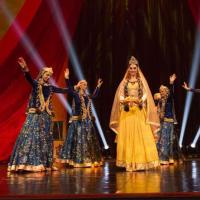 Turkic group of languages: peoples, classification, distribution and interesting facts Turkic language family of peoples
Turkic group of languages: peoples, classification, distribution and interesting facts Turkic language family of peoples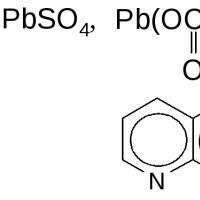 Acetylene is the gas with the highest flame temperature!
Acetylene is the gas with the highest flame temperature!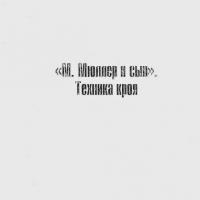 Clothes design (cut) system “M”
Clothes design (cut) system “M” What are some ways to preserve wild animals and plants?
What are some ways to preserve wild animals and plants?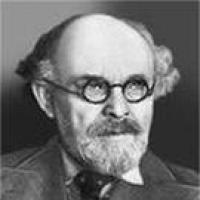 Literature test on the topic "Pantry of the Sun" (M
Literature test on the topic "Pantry of the Sun" (M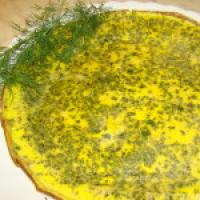 Herbs: types of herbs, culinary uses and flavor combinations
Herbs: types of herbs, culinary uses and flavor combinations Present tenses (Simple, Continuous, Perfect, Perfect Continuous)
Present tenses (Simple, Continuous, Perfect, Perfect Continuous)